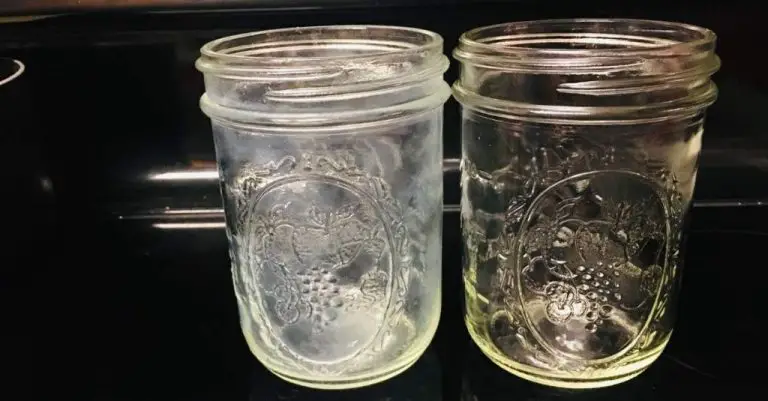Are Fire Starters Safe For Wood Stoves?
Fire starters are materials used to help ignite kindling wood and get a fire going in a wood stove. They are typically small ignitable items that catch fire easily and burn hot enough to light larger pieces of wood. Common types of fire starters include commercial products like paraffin fire starter cubes, wood wool fire starters, cardboard egg cartons with wax, and homemade options like dryer lint or candles. Using a fire starter can help make starting a fire in a wood stove quicker and easier.
Fire starters work by igniting at a lower temperature than wood, allowing them to catch flame with just a match or lighter. As they burn, fire starters transfer heat to the kindling, helping the kindling reach its ignition point faster so the fire gets established quicker. This makes fire starters particularly helpful for cold weather when getting a new fire going can be challenging. With proper use, fire starters are generally safe and effective tools for starting wood stove fires.
Types of Fire Starters
There are several common household items that can be used to start a fire in a wood stove safely and effectively. Some of the most popular options include:
Newspaper – Rolled up balls of newspaper make excellent fire starters. The paper lights easily and burns long enough to ignite kindling and logs. Make sure the paper is clean and free of any glossy print or colored ink, which can release toxic fumes when burned.
Cardboard – Plain cardboard like cereal boxes, paper towel tubes and egg cartons can help start a fire. Avoid cardboard with wax coatings. Shred or cut the cardboard into strips before using. The dense fiber content allows it to burn slow and steady.
Dryer lint – Lint from the clothes dryer, gathered over time in the lint trap, provides an easy fire starter. The lint catches quickly, burns hot and helps ignite larger fuel sources. Avoid using lint with synthetic fibers or fabric softener residue.

Commercial fire starters – Specialty products like fire starter bricks, cubes and logs made from compacted sawdust, wax and other materials can be purchased. These starters burn longer than paper and lint.[1]
Benefits of Using Fire Starters
Using fire starters can provide some key benefits when lighting a fire in a wood stove:
Help start fire quickly – Fire starters are designed to ignite easily and quickly with a match or lighter. This gets the fire going right away without having to fumble with kindling or paper (Source).
Use less wood – Fire starters burn hot and long enough to light larger logs more quickly. This allows you to avoid overloading the firebox with excessive kindling and small starter logs (Source).
Less smoke – The fast, hot ignition of fire starters means the fire gets established and draft in the chimney starts sooner. This results in less initial smoke being released into the room.
Potential Risks
Using certain fire starters with wood stoves can pose some potential risks that users should be aware of. Some of the main concerns include:
Toxic Fumes
Burning certain manufactured wood products, chemicals, or accelerants in a wood stove can release incredibly toxic fumes into the air in your home. According to experts, burning materials like plywood, particle board, and chemically-treated wood can emit formaldehyde, benzene, and other carcinogenic compounds when burned (Source). It’s critical to avoid using these types of materials as fire starters.
Flare-Ups
Some fire starting aids like lighter fluids, gasoline, and other accelerants can cause dangerous flare-ups or explosions when used in wood stoves. The intense heat generated inside the stove can cause accelerants to ignite unexpectedly and rapidly, posing a safety risk.
Chimney Fires
Using flammable liquids or inappropriate materials could potentially lead to a chimney fire. If the flames spread quickly due to an accelerant, the buildup of creosote in the chimney could ignite, causing a dangerous chimney fire. Prevent this by only using recommended, safe fire starters.
Tips for Safe Use
When using fire starters in a wood stove, proper ventilation is crucial for safety. Make sure the damper is fully open before and during use to allow for proper airflow and ventilation (Source: https://www.northlineexpress.com/fireplace-help-how-to-start-a-fire-woodstove.html). Use only moderate amounts of fire starter materials and avoid overloading the firebox, as excessive amounts can lead to dangerous flare-ups or unintended rapid burning. It’s also wise to actively supervise the fire for the first 15-30 minutes after adding fire starters to monitor temperature and flames. Never leave the stove unattended when first firing it up with aids like wax logs, packets, or cubes.
Recommended Fire Starters
There are several commercially available fire starters that are safe and effective for use in wood stoves. According to Outdoor Life, some top options include:
- Pyro Putty – This pliable putty-like material can be molded into any shape and burns for up to 10 minutes. It’s non-toxic and leaves no residue behind.
- FireFlame – These pre-treated recycled sawdust and wax fire starters are simple to use and burn cleanly for up to 15 minutes.
- Superior Trading Co Light a Fire – These natural wood wool fire starters catch easily and burn for up to 10 minutes without chemicals or petroleum.
You can also make your own DIY fire starters at home using materials like cotton balls, petroleum jelly, sawdust, cardboard egg cartons, and wax. The benefit of DIY options is you can customize the size and burn time. However, commercial fire starters are often easier, more convenient, and professionally tested for safety.
When selecting any fire starter, look for non-toxic all-natural ingredients that won’t leave behind chemical residues. Avoid plastic, trash, coated materials, or anything with a strong chemical smell, as those can release hazardous fumes.
Avoid Unsafe Materials
When using fire starters, it’s important to avoid flammable or toxic materials that can be dangerous.
According to Poison Control, gel or liquid fire starters often contain methanol, which can be toxic when ingested or absorbed through the skin. Products with methanol should be kept out of reach of children and pets.
Other unsafe materials to avoid include:
– Lighter fluid or gasoline – highly flammable and can cause explosions
– Paint thinners or solvents – release toxic fumes when burned
– Aerosol cans – can explode when heated
– Treated wood – can release toxic chemicals when burned
– Plastics – release toxic fumes and can melt into a hazardous goo
Stick to commercially available fire starter products made specifically for wood stoves and fireplaces. Avoid improvising with household materials not meant to be burned.
Proper Wood Stove Operation
Proper operation and maintenance are crucial for safe and efficient use of a wood stove. Here are some key tips:
Perform regular maintenance according to the manufacturer’s recommendations. This includes inspecting seals, replacing any damaged parts, and cleaning out ash regularly (cite: https://www.nationwide.com/lc/resources/home/articles/wood-stove-safety).
Have the chimney cleaned and inspected annually by a professional chimney sweep before the heating season begins. Creosote buildup in the chimney can cause dangerous chimney fires (cite: https://www.wikihow.com/Use-a-Wood-Stove).
Only burn dry, seasoned wood with a moisture content below 20%. Wet or green wood burns inefficiently and leads to more creosote buildup (cite: https://www.nationwide.com/lc/resources/home/articles/wood-stove-safety). Allow cut wood to dry for 6-12 months before burning.
Warning Signs
There are several signs that indicate an unsafe wood stove operation that users should watch for (5 Wood Stove Safety Tips Every Stove-Owner Should Know). Three key warning signs to look out for are overheating, excess smoke, and creosote buildup.
Overheating is one of the most dangerous warning signs. If a wood stove gets too hot, it can lead to a chimney fire or even cause the stove to warp or break. Signs of overheating include the stove glowing red, excessive heat coming from the stove or stovepipe, and cracking or warping stove parts. If you notice overheating, let the fire die down and inspect the stove before further use.
Excess smoke leaking from a wood stove often signals incomplete combustion and creosote buildup in the chimney. Thick, billowing smoke during operation and smoke leaking from stove joints indicate the need for chimney cleaning and improved air flow. Left unchecked, creosote buildup greatly increases the risk of a chimney fire.
Creosote is a tar-like byproduct of burning wood that accumulates in the chimney. Regular chimney inspections and cleaning are required to prevent dangerous creosote accumulation. Signs include black streaking inside the chimney, a glazed or shiny look to the interior chimney walls, and loose debris or soot falling when tapping the chimney walls.
Conclusion
In summary, fire starters can be very useful tools for safely and easily starting a fire in your wood stove. When used properly, they provide an effective means of igniting your wood and keeping the fire going strong. However, caution should always be exercised, as improper use of certain starters may pose safety risks.
The key benefits of using fire starters are convenience, reliability, and efficiency. Quality starters like paraffin cubes, solid fuel tabs, and fatwood eliminate the hassle of struggling to light your wood and serve as an excellent catalyst to your fire. This allows you to avoid the dangers associated with liquid fuels while still enjoying an easy start.
By selecting the proper starter materials, using them correctly, and following general wood stove safety guidelines, you can harness the advantages of fire starters while minimizing any risks. With a bit of care and common sense, fire starters can be an invaluable addition to your hearth routine.



